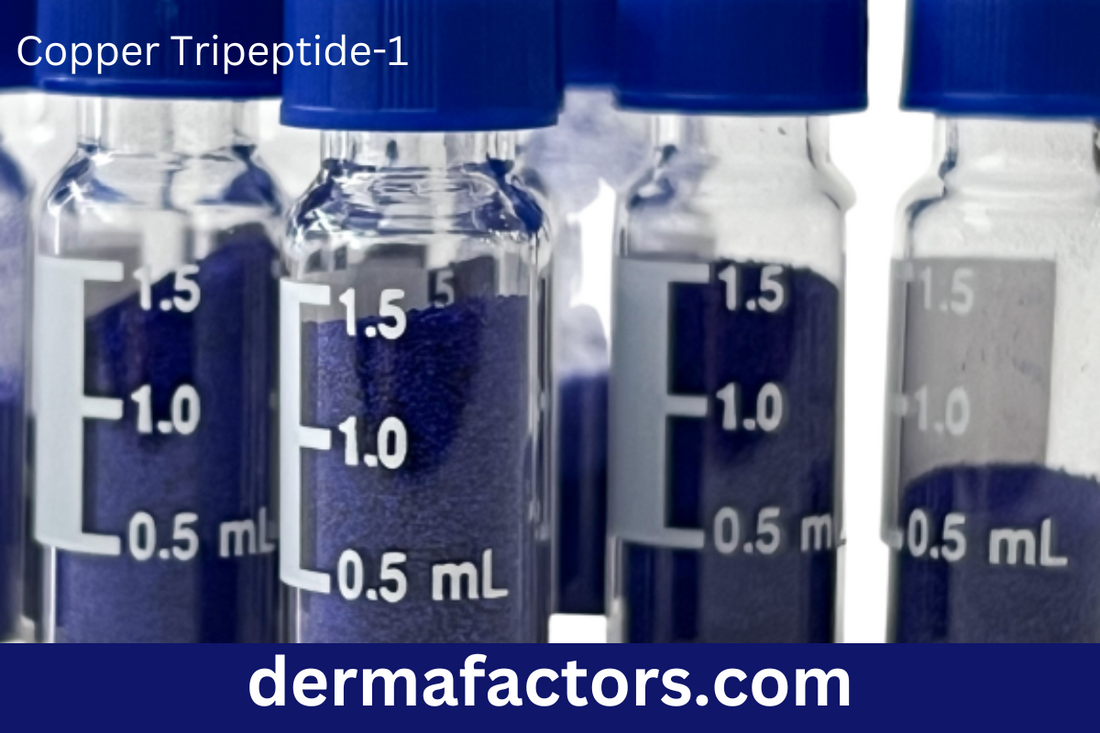
Copper Peptide - a robust anti aging skincare essential
Share
Copper tripeptide-1 has been recognized as the most effective anti-aging skincare ingredient there is. Is this true? If so, how does it work, and how should it be used?
If you are not a cosmetic professional, you may be confused by all the different names given to this ingredient. Copper tripeptide-1 is sometimes called GHK-Cu, copper tripeptide, or simply copper peptide.
Copper tripeptide-1 is a skin-identical ingredient, which means it exists naturally in our skin. After years of studies, ample evidence supports copper as a critical element in wound healing, collagen, and GAG synthesis. It offers antimicrobial effects and skin protection. Nobody argues about whether it works or not. If you have never heard of Dr. Loren Pickart, Google it. She's done phenominone studies on this topic. Copper is important in skin regeneration. Collagen can not be synthesized without it. Tripeptide-1 is a signal molecule that initiates the synthesis of collagen and other matrix substances. When putting those two parts together, you create synergistic skin rejuvenating benefits that are stronger than vitamin C and retinoic acid【Article】 Although it is named as an anti-wrinkle ingredient, but it works on multiple skin issues.

There are many theories about skin aging, but ultimately, it all comes down to losing the skin matrix. The skin matrix is the non-cellular part of the skin tissue comprising collagen, elastin, other proteins, glycosaminoglycans (GAGs), electrolytes, and water, etc. The volume of the skin matrix decides your skin's appearance and health.
While most people think antiaging is all about collagen and elastin, GAGs in the skin matrix are as important as, or even more important in maintaining normal fullness, suppleness, and skin elasticity.
In the dermis, GAGs hold most water (60-70%) to form gooey filler to support collagen and elastin structure. This filler allows the skin to bounce back after pressing or to make the wrinkle disappear after facial muscle movements. It works synergistically with our collagen and elastin to keep the skin youthful.
The normal content of GAGs maintains the normal amount of water in the skin. This is critical not only to the skin's youthful appearance but also to its metabolism, self-repair, immune response, and all of its physical/biological activities. The outer layer of the skin, the epidermis, also relies heavily on GAGs for its physical and biochemical activities because it doesn't have its own blood/nutrient supply system.
As you can see, loss of matrix is directly linked to skin sagging, wrinkling, and radiance. GAGs play an even more important role in the skin's youthful appearance than we usually give it credit for.
A typical example is the hyaluronic injections dermatologists and plastic surgeons often use to plump the skin and eliminate wrinkles. Hyaluronic acid is one of the GAGs in the dermis.
As you can see, skin antiaging should focus on the health of both the epidermis and dermis. According to Dr. Pickart and other scientific studies, copper tripeptide-1 seems to do it all for us.
The copper tripeptide-1 molecule comprises two parts: the copper part and the tripeptide-1 part. Copper is a critical cofactor in collagen synthesis (another example is vitamin C), while tripeptide-1 is a signal factor that initiates both collagen and GAG synthesis.
Copper tripeptide-1 can also provide other skincare benefits, such as protecting the skin against free radicals and balancing the skin microbiome.
Our skin gradually loses copper content as we age. According to some experts, by age 60, we lose 60% of the copper content in our skin. Supporting our copper content in the skin has become one of the major ways to improve all signs of skin aging, such as loss of skin volume (that hollo effect around eyes) and thinning of the skin, and keep the skin looking young. Tripeptide-1, as a signal molecule, makes it happen.
Enjoy and share this awesome ingredient with your friends and customers.
